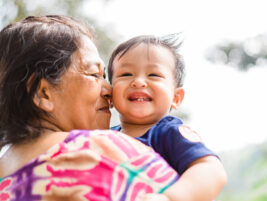Handbook of Jealousy: Theory, Research, and Multidisciplinary Approaches. Edited by Sybil L. Hart and Maria Legerstee, WileyBlackwell, 2010.
The impressive Handbook of Jealousy edited by Sybil L. Hart and Maria Legerstee draws attention to an important and universal yet startlingly under-researched field of inquiry, namely the development of jealousy. Adopting a balanced approach, this volume treats jealousy not solely as a destructive force, as so often portrayed in the literature, but also, “as having a more pro-social function driving ardor as well as goal-directed behavior that helps protect relationships and ensure survival”(Hart, p. 1). Authored by an outstanding list of experts, chapters address jealousy’s evolutionary sources, its presentations in adult friendships and romantic love relationships, as well as during infancy, childhood, and adolescence. The work on infants is especially provocative. Unknown to many infant clinicians and researchers, evidence of jealousy is apparent in early infancy. Since this is a point in development that is well in advance of a sibling’s arrival and well before the emergence of complex emotions, this evidence raises pressing questions about the kinds of experiences and cognitive capacities that underlie nascent jealousy. Commenting on the challenge of explaining the early emergence of jealousy’s affective nucleus, Campos, Walle & Dahl note, “The paradox is that jealousy should not exist in the first year of life, yet evidently it does” (p. 315).
Because it isn’t manifested by a single facial expression but rather by a varying blend of negative affects, jealousy is not easily defined. Importantly, however, a definition can rest on the fact that jealousy is elicited in a specific type of triadic context that includes: a subject, a beloved and a rival. Of special interest for infancy clinicians and researchers is Sybil Hart’s jealousy evocation paradigm, where an infant is confronted by her mother who is directing affectionate attention exclusively toward a life-like baby doll. Typically, the infant’s response is a mix of negative affect (sadness, anger, fear) and mother-directed approach behavior, much like attachment behavior. Contrastingly, extremes of response, as in tantrums and intense aggression or blank behavior and withdrawal, are atypical. These empiricallybased characterizations of typical and atypical infant jealousy drive fresh questions about jealousy’s fundamental form and function. They also hold out promise of further revelations through investigative attention to development within supra-dyadic social contexts. In sum, this handbook on a powerful human emotion is mind opening, carving out new avenues for stimulating research as well as clinical interventions. I consider it a must for infancy professionals.
Book review. Handbook of jealousy: Theory, Research and Multidisciplinary Approaches.
Authors
Fivaz-Depeursinge, Elisabeth,
PhD, Switzerland








